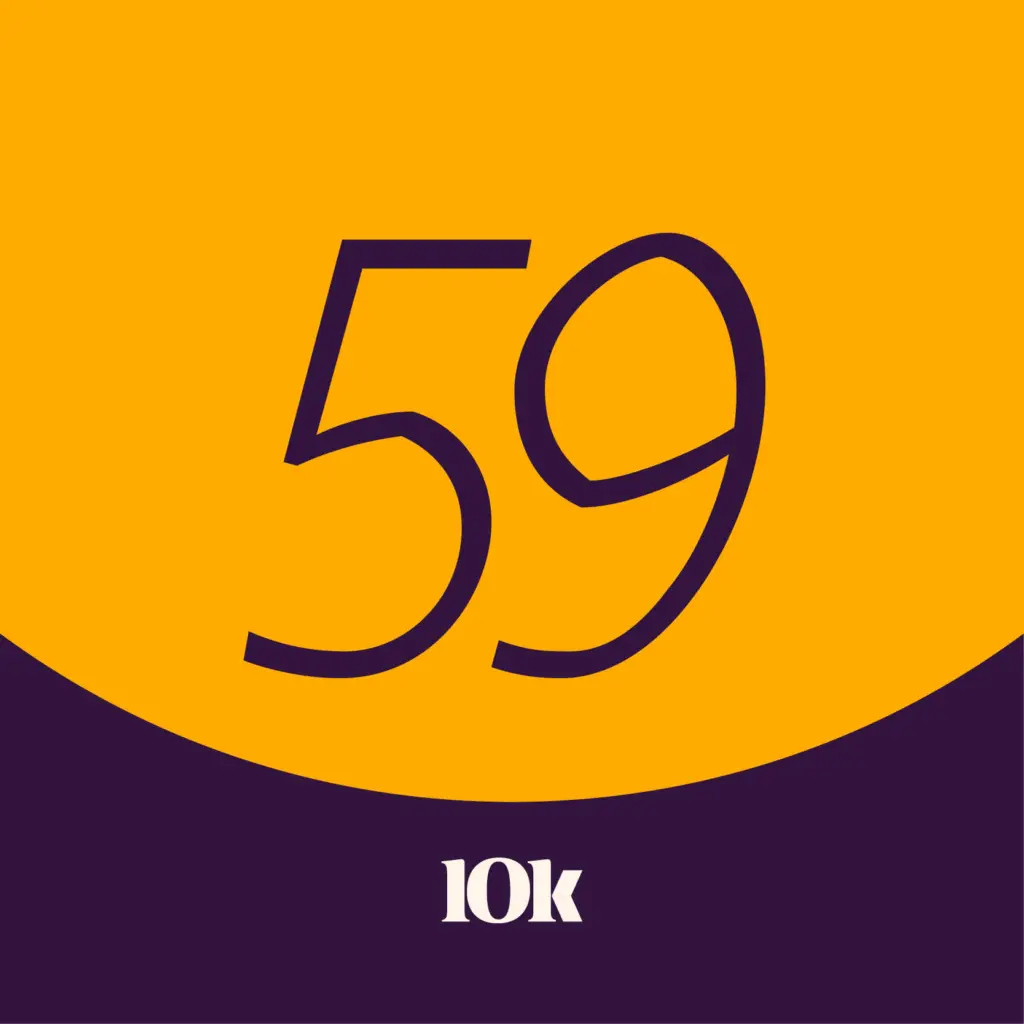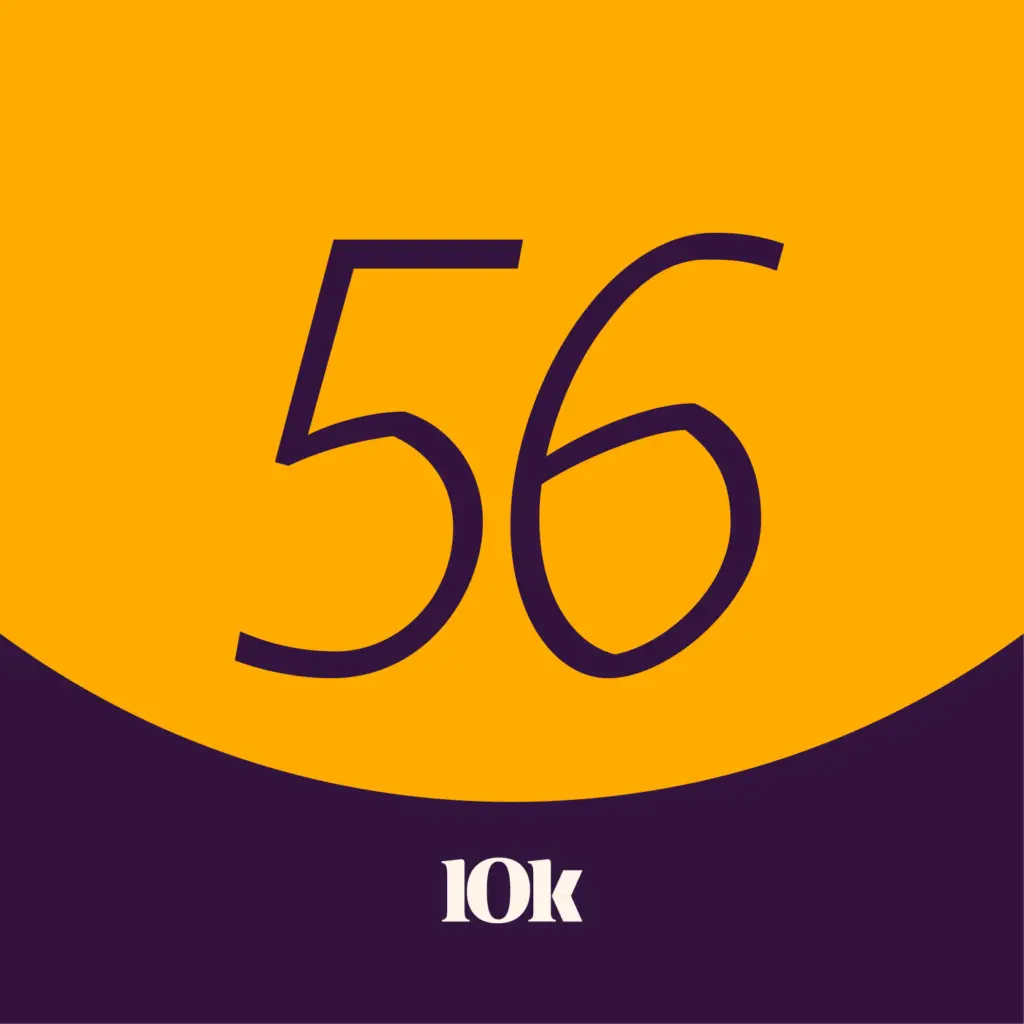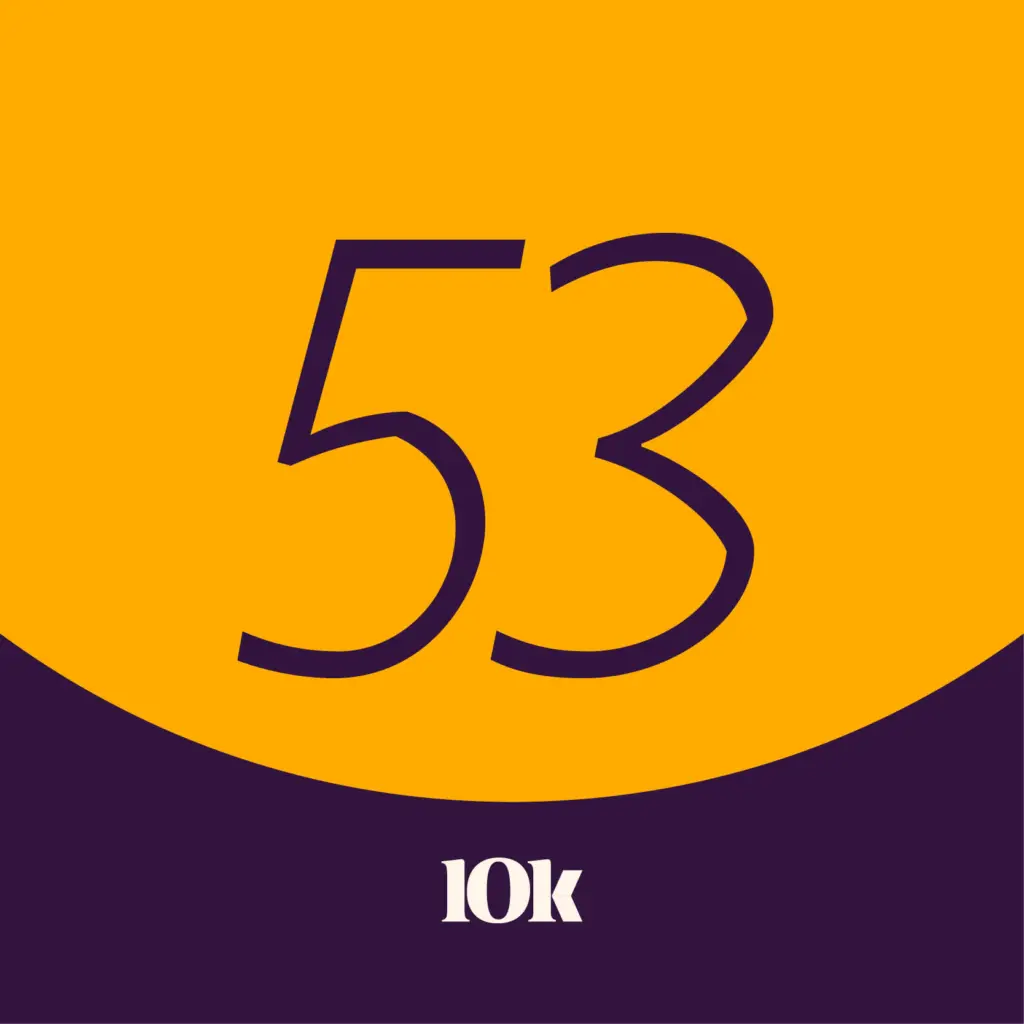Like most of you, we’ve spent the past year dialing into Zoom meetings to connect with coworkers, collaborate, plan our work and even record our podcasts. It’s been a huge shift for us, but for people like Liam Martin, working remotely has been a way of life long before the pandemic.
We interview Liam Martin, the founder of TimeDoctor.com, Staff.com and the world’s largest remote work conference, Running Remote. Liam believes that in the next five years, remote work with move from survival mode to scale mode and that more than 50% of hyper growth companies will be remote. When you consider that only 4% of the workforce was remote pre-pandemic, that’s a very significant number.
It was a fascinating conversation.
And if you’re interested in learning more about Running Remote (which is coming up on May 21st), visit runningremote.com.
Enjoy!
This podcast content was created prior to our rebrand and may contain references to our previous name (OST) and brand elements. Although our brand has changed, the information shared continues to be relevant and valuable.
Episode Transcript
Andrew Powell: Hey, everybody. Welcome to “Ten Thousand Feet,” where we unpack all things digital transformation. On this episode, we’ll talk to serial entrepreneur, Liam Martin. Liam is the co-founder of many things including timedoctor.com, staff.com, and the world’s largest remote work conference, Running Remote. Liam is passionate about empowering workers to work wherever they want and whenever they want.
His Running Remote conference is coming up on May 21st, and you can go to runningremote.com to check that out. So please welcome Liam Martin and enjoy.
View Full Transcript
Andrew Powell: So Liam, I’m really excited to have you with us today. Can you start just by telling us a little bit about who you are?
Liam Martin: Sure. So my name is Liam, Liam Martin. I’m a human on planet earth, more specifically, I’m currently in Montreal, Canada right now, because of COVID, and I’ve been stuck in the same place for the past year and a half. I usually travel quite a bit. I spent about six months traveling remotely, and I am the co-founder of a couple of technology companies: timedoctor.com and staff.com, which are tools that enable time-tracking for remote work. And then I’m also the core organizer of Running Remote, which is the largest conference on building and scaling remote teams, which ironically wasn’t remote until COVID, and then we pivoted to remote and, you know, it’s kind of like a meta meta type of deal, but that’s been going okay as well over the last year, obviously, even more activity in remote in the last 15 months than there’s been in the last 15 years.
Andrew Powell: Yeah, for sure.
Liam Martin: I’ve been doing this for 15 years, so stuff’s been kind of crazy, and I’ve been doing a lot of 12-hour days.
Andrew Powell: All right, Liam. I have to ask you about that answer, because it was a little weird. You live in Montreal, right? It isn’t like you’re stuck there. It’s just that you can’t travel, but you usually travel.
Liam Martin: Yeah. So I bought a COVID house here, and I—for those of you that don’t know Montreal, I live in a place called the Plateau, which has the highest concentration of artists per square foot in North America, so I really like to be in very like organically creative environments. I feel—I actually—I do believe that, probably, in another life I would have been an artist, but I need those types of people around me to give me the out of box thinking that I need to be able to do the type of work that I do in my job. So I moved to this really nice COVID house and I can’t use it because we’re locked inside. There’s no restaurants, you know, that’s like I can go to a grocery store and that’s about it. I know that in—when we’re recording this, the US is doing fantastically well on their vaccine distribution, but we’re not doing as well here, and we got a little bit of the Brazilian variant and a little bit of the Indian variant now is here, so we’re kind of just in it for the long haul. I’m hopeful that I can have a successful Christmas here, but you know, as of right now, it’s all up in the air.
Andrew Powell: So I’m sorry to hear about all of those challenges, but what an exciting time to be in the business of remote work.
Liam Martin: Yeah. That is a silver lining. I think that when this is all over, we’re going to recognize that, yes, it was a horrible pandemic, but there were some positives that came out of it. The biggest one to me at least is everyone thought that remote work wouldn’t work. It was, I mean, fundamentally it was a cottage industry, right? So we had a thousand people at our last event for Running Remote, and from a virtual perspective this last year, we’ve had over 20,000 people that have attended. It’s completely changed. And the reality is that remote work does work, actually, for everyone at scale. And more importantly, and I’ll put it on your podcast first, I believe in the next five years, more than 50% of all hyper-growth companies, that IPO will be remote companies. I don’t know if you know the recent IPO Coinbase [inaudible] [00:04:24] last week, right? $140 billion IPO, biggest IPO of 2021. The first time in the history of the SCC where they said, “Hey, you know, you’ve got to choose a headquarters. You’ve got to choose a headquarters for where you’re set up.” And he said, “Listen, anything that we would say, wouldn’t be the truth. We don’t have an office. All of our employees work remotely.” So I think we’re actually experiencing a tide shift where that’s like the first model T off the line. And when the first model T came off the line, the production line, 99% of cars were not made through a production line, but five years later, 99% of cars were built through a—
Andrew Powell: Right.
Liam Martin: production line. It is a more efficient way to be able to build a business, and as opposed to it just being an employee perk, it’s not going to be an employee perk, it is going to be the way that we must do business in the future. Particularly if you’re a technology company that isn’t dependent upon an actual like physical location to facilitate your business.
Andrew Powell: It’s certainly—our headquarters is in the Midwest of the United States and then the Midwest US manufacturing matters, we build a lot of things, physical, durable goods, probably you’re still going to need someplace to build those physical, durable goods. It’s the rest of the workforce you envision is shifting into remote?
Liam Martin: Absolutely. Just this week Ford announced that 86,000 of their employees are able to stay remote forever.
Andrew Powell: Yeah.
Liam Martin: And this is not a decision of—they’re defining it as a decision for like, “Oh, this is something that we’re doing for employees. Is this an employee perk?” It is not, it is dollars and cents. It is: if we do not have a more efficient way to be able to facilitate labor, to produce products or services, we are going to be left behind every single employee that you’re able to pull off from a physical office and move them remote, it probably means on every Ford F-150, they are able to squeeze out an extra thousand dollars of profit per unit. And with that type of a razor blade business, you are finished if you cannot adapt to that new way of working.
Andrew Powell: Yeah. Yeah, you’re right. So is that what your Running Remote event is all about? Talk to me a little bit about that.
Liam Martin: Yeah. So, I mean, for us, we—and we started this about four years ago, and again, it’s like crazy how far we’ve come. We get our team retreat. So as a remote first organization, we have everyone fly into one location every single year, other than COVID obviously, where it’s like a little mini conference about the company. And you said, “Well, we’re at a hundred people right now and we want to get to the 200 people. How do we do that?” I started Googling stuff, there wasn’t anything. There was a whole bunch of stuff on how to hire a virtual assistant, but there was nothing about like, if you’re a serious business, how do you actually build and scale that team? The perspective of remote being a lifestyle business, there was a lot of like correlations to that. A lot of remote first organizations couldn’t really get funding back in the day, because it just wasn’t seen as real business. We don’t have an office, so you’re not a real business, right?
Andrew Powell: Right, right.
Liam Martin: And so we said, “Hey, you know what, we want to get rid of that. Let’s just,” it was a ready, fire, aim mentality, where we just rented a venue in Bali, which is where we’ve started Running Remote, and we said, “Let’s rent this venue,” and we got a whole bunch of fantastic people that ended up coming and we had like 250 people for that event, and then it just grew from there. So, it’s specifically on building and scaling remote organizations. And as I had said before, the Coinbases of the world, right? Where do they go for information? They should be coming to Running Remote for that.
Andrew Powell: So I want to explore this a little bit. You use the phrase serious business and you’ve talked a little bit about employee perks, so there’s a shift going on right now that suddenly serious businesses see remote as a way to be a serious business.
Liam Martin: Yes.
Andrew Powell: Is that—that’s part of how you’ve gone from 1000 to 20,000 attendees. Is that something that you think fundamentally changes the way a business evolves? I’m thinking specifically here about existing businesses who had 60,000 employees who all crammed into a world headquarters a year ago.
Liam Martin: Right. So, yeah, I mean, this is the thing that’s going to—I actually think that what’s going to happen in the next 12 months will be bigger than the pandemic as it applies to work. Pre-pandemic we had 4% of the US workforce working remotely. In April of 2020, we had 46% of the US workforce working remotely. 80% of the people that were using a computer as their primary way to interact with their work were working remotely in the month of April.
Andrew Powell: Wow.
Liam Martin: We’re going to see that drop down to about 30% post pandemic. That’s the projections that—and I mean, no one knows, but again, this is my educated guess and that’s why I’m here is to give you my educated guess. That is the largest shift of labor since the industrial revolution, but it didn’t happen in 20 years, it happened in three months.
Andrew Powell: One, yeah.
Liam Martin: What are the impacts for physical locations, right? 12% of our economy, the US economy, is built off of the commercial lease industry. Where’s that going to go? Is that going to get cut in half? A 6% drop in the economy is pretty serious. And a lot of these leases have been—there’s been commitments for, you know, two years, four years, six years, and they’re all processing out, and those leases are not being renewed, so where does that labor—where are those physical offices go after they’re going to get repurposed? Who knows.
With regards the actual culture of those organizations, we lovingly call them pandemic panickers, but they’re okay with it, right? Like March, April, May, I had an email on a phone call with a G20 country that just called us and said, “How do we do this? We have, you know, 350,000 plus employees. How do we actually pivot everyone over to a remote model?” And I said, “I don’t know how you do that, because that’s never been done before.” And they said, “Well, yeah, you’re the guy like, who else? Can you point me in a direction of bigger organizations that could possibly help?” And the reality was is maybe there were half a dozen companies that were a thousand plus seats pre-pandemic that we’re remote first. And it’s just completely changed the way that we perceive work, the way that we interact with work. I mean, we’re hearing Zoom fatigue and we’re hearing, you know, work from home is not remote work, which is true, by the way. After the pandemic, it’s going to get a lot more fun for a lot of remote workers, but fundamentally, it’s just right now, we’re in this survival mode, and the next year we’ll be the scale mode for remote. It will be a—because remote will be choice next year. It won’t be something that you have to do. It’s something that you’re choosing to do, so that’s why I think it’s going to get really exciting in 2022.
Andrew Powell: Well, we’ll see. I’m really excited about the challenges that presents to us as business owners and managers. But let’s talk a little bit about, lacking a better term, work-life balance. How do you take care of your employees when their work life and their home life reside on top of each other?
Liam Martin: So first off, as I stated before, work from home is not remote work. Work from home is scary virus outside that may or may not kill you, and there’s no co-working spaces, there’s no coffee shops, there’s no being able to actually interact with your coworkers outside of your work environment. It’s a very stressful and anxiety filled time. Remote work is going to be very different from that, but for right now, in terms of understanding how to keep everyone together, the first three months was literally just like just responding to being shocked, right? You’re going from this office where everyone is in the same space, and now you’re going to this disjointed environment where everyone’s on these Zoom calls. And the biggest thing that I found, which blew me away, was how people just tried to recreate the office inside of a remote environment. So as an example, Zoom, right? We’re on Zoom right now. Zoom fatigue is real. I spend 54% of my workday on Zoom, which is kind of crazy. You need to cut a lot of that stuff out. There is a methodology inside of remote organizations, remote pioneers, at least, which is called Asynchronous Communication Culture. It is a mindset that you need to minimize synchronous forms of communication, and that is Zoom, you know, for video calling, responding to an instant message on Slack, responding to an email synchronously, doing any of these things that just require you to be pulled out of your flow state—what Cal Newport talks about is deep work—
Andrew Powell: Right.
Liam Martin: and being pulled into this distraction mode, which is only going to elevate your stress and anxiety inside of your work life. So what we do, as an example, is I shut off all notifications. People may be messaging me on Slack right now, it doesn’t matter. I don’t see it until I’m ready to open it up and actually interact with it. I have like a hierarchy of communication, which is in-person is better than video, video is better than audio, audio is better than instant messaging, instant messaging is better than email. As you move up the chain, you become more synchronous, or you move down the chain, you become more asynchronous. Remote first organizations see asynchronous communication as the ideal as the utopia that everyone is trying to move towards. And this is one of the things that people don’t understand inside of offices, because in offices, synchronous communication is the norm, but when you think about it, it’s actually a really weird situation. You take an hour and a half out of your day to all drive into a particular place, and then you have what I like to call like an all you can eat buffet when it comes to synchronous communication, because you can just knock on someone’s door and say, “Hey! Hey, what’s what’s going on today? Can I work out this issue with you?” Inside of remote first organizations, synchronous is ala carte. We can choose when to be distracted. So we should minimize that amount of time, and then allow people to be able to actually get work done throughout their workday. I tell people I’m at 54% on Zoom. I suggest to people that they spend under 20% of their workday doing any form of synchronous communication, and your work life balance will completely change after that.
Andrew Powell: That’s a remarkable observation. I want to dig into that just a little bit more, because I think if—one part of it is employees making that choice: I’m going to shut off Zoom, I’m going to close down my email, I’m going to not look at Slack, and I’m going to do some deep work. The other part though is you’ve got to change that culture. If I’m in an organization.
Liam Martin: Yeah. That’s a top down issue.
Andrew Powell: Yeah. Okay.
Liam Martin: So I’m talking to the business owner here, unfortunately, and if you’re listening to this and you’re the employee, send it up the chain for crying out loud and say, “This is a stupid way to work.” Send them this podcast, say, “Hey, listen to this weird guy, Liam. He’s telling the truth. He’s been doing this for 15 years.”
Try to minimize synchronous forms of communication. It is venom towards remote work. It is what is creating the anxiety inside of your work environment right now. Those little—and everyone can just think about it right now—in Slack, pop up notification, you know, Microsoft Teams sound. If you play that for people, and you hook them up to a EKG, I’m sure that they’re going to have an emotional response every single time one of those little popups pops up, because it’s designed to distract you. It is—people are investing billions of dollars into making those things as distracting as humanly possible to pull you out of your flow state, so you need to stay in it, because that’s actually how you get work done and you move the company forward. But a lot of companies, they have this mindset of, “Well, we need to keep all of the employees accountable and therefore we need to be able to have daily check-ins on Zoom,” as an example. Well, you know what, that doesn’t really work, and I can show you a whole bunch of data points to show you the counter to that, particularly with Time Doctor, where we have a massive database of, you know, remote work employees, and we can see who are doing it properly and who are doing it improperly. And the less distractions that people have during the workday, the more focused they have during the workday the more that they can get done. It’s just—that’s the clear reality, and outside of you feeling better about yourself, because you’ve managed employees effectively for the day, quote unquote, the reality is is that, you know, you probably in remote organizations, probably you’re not needed anywhere near as much as you are inside of a on-premise organization, which is what we call offices, because the managerial layer is significantly less. And that’s just a harsh reality that I think we’re also going to work out over the next 18 months.
Andrew Powell: That’s fascinating. So can we talk about culture just for a second, because for a lot of—
Liam Martin: Sure.
Andrew Powell: what you define as on-premises organizations, all of that synchronous communication is also a part of, quote, our culture, unquote. We get together and chat about stuff and we hang out and have lunch together. How do you recreate those things in a world where everyone’s remote?
Liam Martin: So first off, you cut the vast majority of the bullshit with regards to that stuff. So I’m seeing like forced culture Fridays, right? Where it’s like, “Okay guys, we’re all going to come on and we’re gonna play Cards Against Humanity, but you know, I have the G-rated version so it’s HR approved.” No, shoot me in the face. Like, come on guys. This is not how you actually build meaningful culture inside of your organization. What you need to do is set up some type of a voluntary process, and then measure the dividends from that activity. So I’ll give you a perfect example, every Friday afternoon, and I don’t have it in front of me right now, we play Oculus Quest. We play Oculus virtual reality. So whatever you want to do, if you want to go and play the killing game, that’s just like blood everywhere, and everyone’s on board for that, go ahead and do it. If you want to play cards, go and do that. It doesn’t really matter. You just go and do, or if you don’t want to do anything at all, if you want to do something separate, you can do that, too. What we did is we provided the headset and—which is about $300—and we provided the space. So we said, “Two hours in the afternoon, you guys, you know, you got paid time, do whatever you want.” Then we measured the dividend from that activity. We measured how many times people were actually meeting outside of that two hours, and we found that they were actually meeting almost double the amount outside of that environment, because they all, you know, “This is really fun. We should do this again. Why don’t we do this on Monday? Are you guys playing on Wednesday?” And that’s how we, you know, that’s how we measure culture inside of an organization or at least the cultural kind of framework, because the actual culture happens inside of that. And then—
Andrew Powell: Right.
Liam Martin: the only thing that we do is we really integrate physical objects. I know that we’re just doing this on audio, but I’m holding up one of our employee boxes that we send out to employees, and these boxes, we have hundreds of dollars of stuff that we send to people just to be able to create that form of physicality inside of—just to make people feel like they are actually included. Don’t send them junk, send them good stuff. We have, inside of this box, the Bose SoundTrue Ultras, and they are the best earbuds for both Mac and PC for work, because they have really good microphones, and I tested 11 different earbuds, and I have a video of me going through and testing these 11 different earbuds, and saying, “Here’s why we came to the conclusion to buy these, because they were the best in the industry, and, you know, here’s how I—
Andrew Powell: That’s great.
Liam Martin: came to that conclusion. So it’s all mindful things you’re going to put in that box that really connect to the culture about who you are, why are we different from someone else? Whenever I look at culture, I usually tell people like, it’s a very simple definition: What stuff do you do that’s unique to your organization that other people would see as weird or odd? You just have to identify that. And once you can figure that out, you can then communicate that to everyone inside of your organization. And if they’re onboard for that, great. If they’re not on board for that, perfect, then you can find someone else to be able to fill that spot, because they’re not the person for you.
Andrew Powell: That’s great. That’s great. So, so much to think about. Listen, Liam, if I could ask you one more question, what’s—give me one piece of advice for the business owner who’s been running an on-premises business for as long as they’ve been a business owner, and they’re looking at 2021, 2022 saying, “What now?” What’s the question they should be asking themselves as they rebuild their business—and I’m thinking here post COVID.
Liam Martin: Yup. They should be asking themselves, not whether I’m going to go remote, but can I afford not to go remote in the future of work? Is this a nice to have or is this the way that business is now going to be done?
My belief is, historically pre pandemic, it was a bottom up approach. The employees really wanted it as an employee perk. In the future, it is going to be a top down. It is going to be—we need to be remote, because we cannot function as a business. Our competitors will eat our lunch if we do not have the cost savings that we’re getting from remote work, and if you can pivot into that sooner rather than later, understand how to do it, understand how to do it effectively, you’re going to have a strategic advantage for the next 18 months. If you don’t do it right now, you’re going to be out of business in 18 month.
Andrew Powell: Hmm. Hmm. That’s scary and real and absolutely the sort of thing we should be thinking about.
Listen, Liam, you don’t know this about OST, but our headquarters building used to be a game factory, and we’re quite proud of that, so we always end our episodes of our podcast by talking about your favorite game. What’s the game you’re playing now? Maybe it’s a pandemic game you’re playing, maybe it’s an online game, what’s your favorite?
Liam Martin: Boy, we actually play Risk in virtual reality, which we’ve been loving, because you can get the feeling of actually having like a board game. You get the same board game feel, but you don’t have to set up the board. You can do it from 10 different countries all over the world, and we’ve been playing Risk and loving it. I mean, that’s something that you can get into and play for an hour, hour and a half, have a ton of fun, chat with your friends—been doing that. And then also, well, we’ve been doing poker, too, but those get a little crazier.
Andrew Powell: You don’t have a problem that people want to flip the table at Risk? Risk is one of those games that you think is a strategy game, but it’s actually about luck. It’s about dice roll than anything else. We have a rule in my house that we don’t play Risk anymore, because invariably a table gets flipped.
Liam Martin: Well, thankfully in virtual reality, you can’t flip a table, but if someone wants to build another Risk game in the future, whether you can, that would be a great feature.
Andrew Powell: Great, great. Liam, I appreciate so much your taking the time to talk to us. Is there still time if someone wants to sign up and go to your conference this summer?
Liam Martin: Absolutely. Just go to runningremote.com, check it out. We do have a couple of the free spots still open, so if anyone wants to kind of jump in there and get access to the free tier, I believe it’s going to be available for the next couple of weeks.
Andrew Powell: Fantastic. Thank you so much for sharing your thought, your insight, your experience, your ideas with us. I really, really appreciate it.
Liam Martin: Thanks for having me.
Lizzie Williams: OST, changing how the world connects together.




